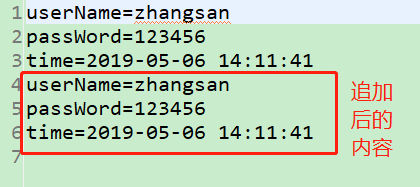NIO在jdk1.4引入,是面向块(缓冲区)编程,而IO是面向流编程
面向块(缓冲区)编程:
数据的读写必须经过缓冲区
我们可以使用Buffer所对应的子类将数据从通道(Channel)流向缓冲区
从缓冲区写到通道叫做读取缓冲区
过程图分析

NIO主要有三大核心部分:
Channel(通道)
Buffer(缓冲区)
Selector(选择器)
还有一个charset(编码)了解下
Buffer(缓冲区)
Buffer是一个抽象类,针对缓冲区封装的一个类,提供相应的方法来操作这个缓冲区
子类
ByteBuffer, CharBuffer, DoubleBuffer, FloatBuffer, IntBuffer, LongBuffer, ShortBuffer
核心类
ByteBuffer和CharBuffer
ByteBuffer有一个子类 MappedByteBuffer
MappedByteBuffer类能够将文件直接映射到内存中,这样我们就可以像访问内存一样访问文件,非常方便
获取Buffer
获取ByteBuffer
static ByteBuffer allocate(int capacity)分配一个新的字节缓冲区。
static ByteBuffer allocateDirect(int capacity)分配新的直接字节缓冲区。
二者获取Buffer的区别
1.创建普通Buffer成本低,读写的效率不高
2.因为创建直接Buffer成本高,所以我们一般用在Buffer生存周期较长的时候使用
3.只有ByteBuffer才能够创建直接Buffer,其他的Buffer对象是不能够创建
4.如果创建了直接Buffer但是我又想要使用其他Buffer的功能,可以将ByteBuffer转换成其他Buffer
例如:asIntBuffer()
四个非常重要的概念
capacity: 缓冲区的容量,不可以为负数,一旦创建了就不能够改变
limit :无效缓冲区的第一个位置索引,limit后面的数据既不可读,也不可写
position :下一个可以被读取或者写入的缓冲区位置索引
mark:标记索引,该索引能够用于下次读取或者写入,它只能够在0-position之间
四个系数的关系:
0 < mark < postion < limit < capacity
五个方法
1、flip(): 将写模式切换为读模式, 将limit的值改为postion的值,同时将postion归0
特点: 就是为下一次数据的读取做好准备
2、clear(): 将读模式切换为写模式,将limit改为capacity的值,同时将postion归0
特点: 就是为下一次数据的写入做好准备
3、put(): 相对读取,向Buffer中存储数据
4、get(): 相对读取,从Buffer中获取数据
5、mark(): 设置标记位
reset(): 重置
hasRemaining(): 判断当前位置和limit之间是否还有元素可处理
绝对读取和相对读取的关系
绝对读取: get(index) 不会影响position的位置
相对读取: put() get() 会影响,每次读取一次,指针后移
举例代码如下
import java.nio.ByteBuffer;
import java.nio.CharBuffer;
import java.nio.IntBuffer;
public class NIODemo {
public static void main(String[] args) {
// ByteBuffer buffer = ByteBuffer.allocate(5);
ByteBuffer buffer2 = ByteBuffer.allocateDirect(10);
CharBuffer buffer = CharBuffer.allocate(8);
// 准备向Buffer中写数据 写模式
System.out.println("capacity:" + buffer.capacity()); // 8
System.out.println("limit:" + buffer.limit()); // 8
System.out.println("position:" + buffer.position()); // 0
buffer.put('x');
buffer.put('y');
buffer.put('r');
System.out.println("------------------------");
System.out.println("capacity:" + buffer.capacity()); // 8
System.out.println("limit:" + buffer.limit()); // 8
System.out.println("position:" + buffer.position()); // 3
System.out.println("------------------------");
// 切换模式 ,limit变为position的位置然后将position变为0
//将写模式切换成读模式
buffer.flip();
System.out.println("capacity:" + buffer.capacity()); // 8
System.out.println("limit:" + buffer.limit()); // 3
System.out.println("position:" + buffer.position()); // 0
System.out.println("------------------------");
char ch = 0;
ch = buffer.get();
System.out.println(ch);//x
buffer.mark();// mark: 1
ch = buffer.get();
System.out.println(ch);//y
System.out.println("------------------------");
System.out.println("capacity:" + buffer.capacity()); // 8
System.out.println("limit:" + buffer.limit()); // 3
System.out.println("position:" + buffer.position()); // 2
System.out.println("------------------------");
ch = buffer.get();
System.out.println(ch);//r
// ch = buffer.get();
// System.out.println(ch); 再读取的话报错 java.nio.BufferUnderflowException
System.out.println("---------++---------------");
buffer.reset();//重置
//以上读取代码存在重复,循环改进
ch = 0;
while (buffer.hasRemaining()) {
ch = buffer.get();
System.out.println((char) ch);
}
System.out.println("------------------");
buffer.clear(); // 将postion 清 0 ,将limit = capacity
System.out.println("capacity:" + buffer.capacity()); // 8
System.out.println("limit:" + buffer.limit()); // 8
System.out.println("position:" + buffer.position()); // 0
// 注意: 调用clear方法只是将读模式改为写模式,并不会清空缓冲区的数据,再写入数据会替换之前的数据
System.out.println(buffer.get(1));//y
System.out.println("执行绝对读取之后Buffer的position位置:" + buffer.position());//o
}
}
Channel(通道)
Channel原理类似于传统的流对象, FileInputStream FileOutputStream
3个主要的区别
1.程序如果想要读取Channel中的数据,不能够直接读写,必须经过Buffer 【唯一性】
2.通过Channel通道既能够读取也能够写入数据 【双向性】
3.Channel能够将指定的部分或者全部文件映射到内存中
全部映射MappedByteBuffer
部分文件映射
Java中为Channel提供了如下常用的类
FileChannel 和文件相关的通道
DatagramChannel 和UDP协议传输数据相关的通道
SocketChannel 针对TCP协议客户端Socket提供的通道
获取FileChannel对象
和文件相关的普通流有哪些?
FileInputStream
FileOutputStream
RandomAccessFile
常用的方法
read() : 将Channel中的数据读取到Buffer中
write() : 向Buffer中写入数据
map(): 将channel中的数据全部或者部分映射到Buffer中
inChannel.map(mode, position, size)
MappedByteBuffer mappBuffer = inChannel.map(MapMode.READ_ONLY, 0, srcFile.length());
举例代码如下
public class NIODemo03 {
public static void main(String[] args) throws IOException {
//封装文件路径
File srcFile = new File("nio.txt");
//创建字节输入流对象
FileInputStream fis = new FileInputStream(srcFile);
//创建字节输出流对象
FileOutputStream fos = new FileOutputStream(new File("nio4.txt"));
// 获取Channel对象
FileChannel inChannel = fis.getChannel();
FileChannel outChannel = fos.getChannel();
// 获取Buffer对象
ByteBuffer buffer = ByteBuffer.allocate(10);
// 将inChannel中的数据读取到Buffer中
// int len = inChannel.read(buffer);
// System.out.println(len);
// byte[] bys = buffer.array();
// System.out.println(new String(bys, 0, len));
// // 切换成读模式
// buffer.flip();
// len = inChannel.read(buffer);
// System.out.println(len);
// System.out.println(new String(buffer.array(), 0, len));
// buffer.flip();
//
// len = inChannel.read(buffer);
// System.out.println(len);
// System.out.println(new String(buffer.array(), 0, len));
// buffer.flip();
int len = 0;
while ((len = inChannel.read(buffer)) != -1) {
buffer.flip();
System.out.print(new String(buffer.array(), 0, len));
}
while ((inChannel.read(buffer)) != -1) {
buffer.flip(); // 为取出数据做好准备
outChannel.write(buffer);
buffer.clear();
}
// 3.Channel能够将指定的部分或者全部文件映射到内存中
// java.nio.channels.NonWritableChannelException
// java.nio.channels.NonReadableChannelException
MappedByteBuffer mapBuffer = inChannel.map(MapMode.READ_WRITE, 0, srcFile.length());
byte[] array = mapBuffer.array();
System.out.println(new String(array));
}
}
需求:随机访问文件流来获取Channel对象并且实现文件的追加写入
代码实现
import java.io.RandomAccessFile;
import java.nio.MappedByteBuffer;
import java.nio.channels.FileChannel;
import java.nio.channels.FileChannel.MapMode;
public class NIODemo {
public static void main(String[] args) throws Exception {
RandomAccessFile raf = new RandomAccessFile("nio.txt", "rw");
FileChannel channel = raf.getChannel();
MappedByteBuffer mappedByteBuffer = channel.map(MapMode.READ_ONLY, 0, raf.length());
channel.position(raf.length()); // seek
channel.write(mappedByteBuffer);
}
}

Selector(选择器)
Selector运行单线程处理多个Channel,如果你的应用打开了多个通道,但每个连接的流量都很低,使用Selector就会很方便。
例如在一个聊天服务器中。要使用Selector, 得向Selector注册Channel,然后调用它的select()方法。这个方法会一直阻塞直到某个注册的通道有事件就绪。一旦这个方法返回,线程就可以处理这些事件。
事件的例子如:新的连接进来、数据接收等。
charset(编码)
java.nio.charset包中提供了Charset类,它继承了Comparable接口;
还有CharsetDecoder、CharsetEncoder编码和解码的类,它们都是继承Object类。
Java中的字符使用Unicode编码,每个字符占用两个字节,16个二进制位,向ByteBuffer中存放数据的时候需要考虑字符的编码,从中读取的时候也需要考虑字符的编码方式,也就是编码和解码。
编码
String s = "Hello中国";
byte[] bys = s.getBytes("utf-8");
// [72, 101, 108, 108, 111, -42, -48, -71, -6]
// [72, 101, 108, 108, 111, -28, -72, -83, -27, -101, -67]
System.out.println(Arrays.toString(bys));
解码
// Hello涓浗
String data = new String(bys, "gbk");//如果编码和解码的charset不一样,便会导致乱码
System.out.println(data);
举例代码如下
import java.io.UnsupportedEncodingException;
import java.nio.ByteBuffer;
import java.nio.CharBuffer;
import java.nio.charset.CharacterCodingException;
import java.nio.charset.Charset;
import java.nio.charset.CharsetDecoder;
import java.nio.charset.CharsetEncoder;
import java.util.Arrays;
public class NIODemo {
public static void main(String[] args) throws UnsupportedEncodingException, CharacterCodingException {
// 编码 字符/字符数组/字符串 --> 数值
// 1.创建编码表对象
Charset utf8 = Charset.forName("utf-8");
Charset gbk = Charset.forName("gbk");
//2.创建编码器对象或者解码器对象
CharsetEncoder utf8Encoder = utf8.newEncoder();
CharsetDecoder utf8Decoder = utf8.newDecoder();
CharsetEncoder gbkEncoder = gbk.newEncoder();
CharsetDecoder gbkDecoder = gbk.newDecoder();
// 3.创建需要编码或者解码的数据源,数据源一定要是Buffer
CharBuffer charBuffer = CharBuffer.allocate(10);
charBuffer.put("Hello中国");
charBuffer.flip();
System.out.println("======编码========");
ByteBuffer byteBuffer = utf8Encoder.encode(charBuffer);
for (int i = 0; i < byteBuffer.limit(); i++) {
System.out.println(byteBuffer.get(i));
}
System.out.println("======解码========");
CharBuffer charBuffer2 = gbkDecoder.decode(byteBuffer);
System.out.println(charBuffer2);
}
}
File 文件的路径的抽象表现形式
jdk1.7提供了一些非常方便的工具类 Paths Files Path(抽象的路径表现形式)
//获取文件路径
Path path = Paths.get("D:\\zhouym");
System.out.println(path.startsWith("D://"));
System.out.println(path.isAbsolute());
System.out.println(path.getNameCount());
//通过paths拷贝文件,返回的是拷贝过程时间
long time = Files.copy(Paths.get("nio.txt"), new FileOutputStream("nioooo.txt"));
System.out.println(time);
//通过FileStore获取盘符或者文件的容量
FileStore fileStore = Files.getFileStore(Paths.get("C:"));
System.out.println(fileStore.getTotalSpace()/1024/1024/1024);//换算成GB为单位的容量
利用NIO来遍历文件,基于事件驱动的方式遍历文件
import java.io.IOException;
import java.nio.file.FileVisitResult;
import java.nio.file.FileVisitor;
import java.nio.file.Files;
import java.nio.file.Path;
import java.nio.file.Paths;
import java.nio.file.SimpleFileVisitor;
import java.nio.file.attribute.BasicFileAttributes;
public class NIODemo {
public static void main(String[] args) throws IOException {
FileVisitor<Path> visitor = new SimpleFileVisitor<Path>() {
@Override
public FileVisitResult preVisitDirectory(Path path, BasicFileAttributes attrs) throws IOException {
System.out.println("正准备访问" + path + "文件");
return FileVisitResult.CONTINUE;
}
@Override
public FileVisitResult visitFile(Path path, BasicFileAttributes attrs) throws IOException {
System.out.println("正在访问" + path + "文件");
if (path.endsWith("NIODemo.java")) {
System.out.println("找到了Java文件,可以停止查找了");
return FileVisitResult.TERMINATE;
}
return FileVisitResult.CONTINUE;
}
@Override
public FileVisitResult visitFileFailed(Path path, IOException exc) throws IOException {
return FileVisitResult.SKIP_SIBLINGS;
}
@Override
public FileVisitResult postVisitDirectory(Path path, IOException exc) throws IOException {
return FileVisitResult.CONTINUE;
}
};
Files.walkFileTree(Paths.get("D:\\zhouym"), visitor);
}
}
使用NIO的WatchService监控文件系统变化
import java.nio.file.FileSystems;
import java.nio.file.Paths;
import java.nio.file.StandardWatchEventKinds;
import java.nio.file.WatchEvent;
import java.nio.file.WatchKey;
import java.nio.file.WatchService;
import java.util.List;
public class NIODemo {
public static void main(String[] args) throws Exception {
// 获取文件系统的WatchService对象
WatchService watchService = FileSystems.getDefault().newWatchService();
Paths.get("c:").register(watchService, StandardWatchEventKinds.ENTRY_CREATE,
StandardWatchEventKinds.ENTRY_DELETE, StandardWatchEventKinds.ENTRY_MODIFY,
StandardWatchEventKinds.OVERFLOW);
// 通过wachService来监听文件系统
while (true) {
WatchKey key = watchService.take();
List<WatchEvent<?>> pollEvents = key.pollEvents();
for (WatchEvent<?> watchEvent : pollEvents) {
System.out.println(watchEvent.context() + "发生了" + watchEvent.kind() + "事件");
}
boolean reset = key.reset();
if (!reset) {
break;
}
}
}
}





 本文详细介绍了Java NIO的核心组件,包括Buffer、Channel和Selector。Buffer作为数据容器,有多种类型如ByteBuffer,具备容量、位置、限制等概念,并提供了flip、clear等方法;Channel是双向数据传输通道,如FileChannel,需配合Buffer进行数据读写;Selector允许单线程处理多个Channel,提高效率。此外,还提到了charset编码解码在NIO中的应用。
本文详细介绍了Java NIO的核心组件,包括Buffer、Channel和Selector。Buffer作为数据容器,有多种类型如ByteBuffer,具备容量、位置、限制等概念,并提供了flip、clear等方法;Channel是双向数据传输通道,如FileChannel,需配合Buffer进行数据读写;Selector允许单线程处理多个Channel,提高效率。此外,还提到了charset编码解码在NIO中的应用。
















 747
747

 被折叠的 条评论
为什么被折叠?
被折叠的 条评论
为什么被折叠?








